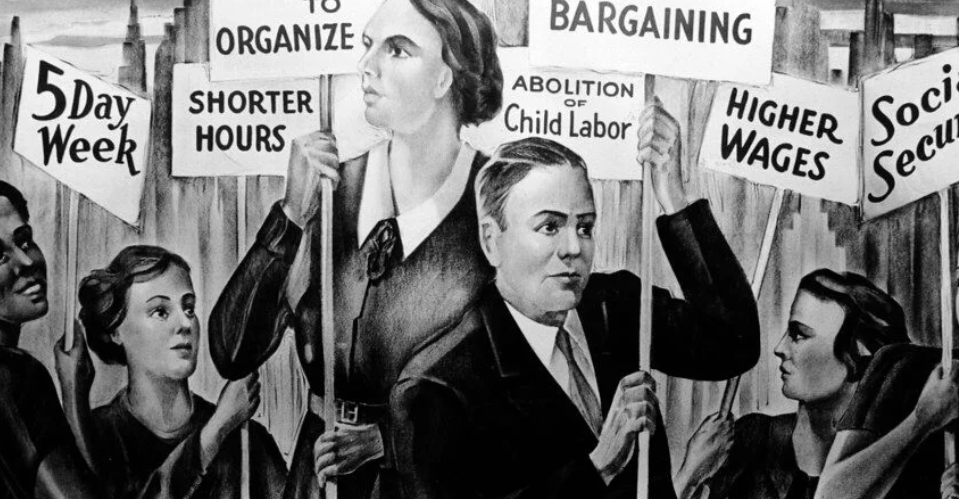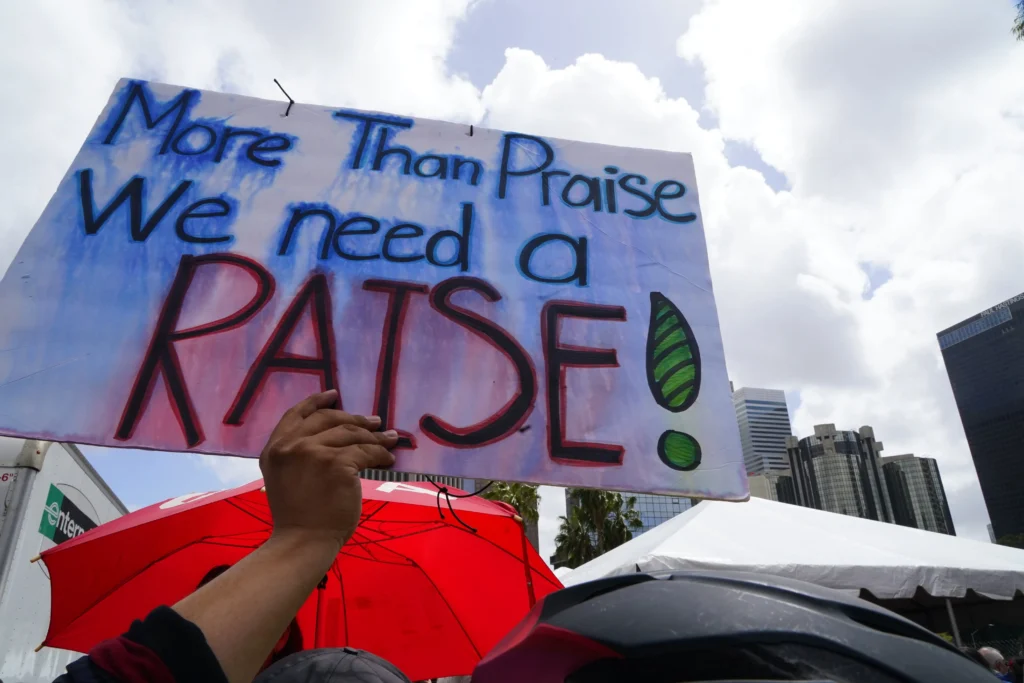Newsmatro

In a puzzling trend, the United States labor movement is experiencing a paradoxical situation: widespread popularity among the public but dwindling union membership. While nearly a quarter of the workforce belonged to a union four decades ago, that figure has now dropped to just over 10%. The question arises: What has caused the decline of the American labor movement?
This summer has been dubbed “the summer of strikes,” with the screenwriters and actors’ strike taking center stage in the entertainment industry, followed by strikes by hotel cleaners, Amazon warehouse employees, and food industry workers. In the first eight months of 2023 alone, more than 323,000 workers have walked off their jobs in pursuit of improved benefits, pay, and working conditions. However, despite this surge in strike activity, the rate of union membership in the US remains at its lowest in decades, hovering at 10.1% in 2022.
Stagnant Union Membership Amidst Rising Strikes
In 2018, a significant labor movement emerged, with approximately 485,000 individuals participating in large-scale strikes, marking the highest level of participation since 1983. The “Red for Ed” movement in 2018 and 2019 played a pivotal role in driving this large-scale labor action. Educators from across the nation, transcending party lines, walked out to demand higher salaries, improved working conditions, and increased school funding.
However, while worker stoppages have continued to make headlines, union membership rates have experienced a steady decline over the past few decades. The overall rate of union membership is now half of what it was in 1983, dropping from 20.1% to 10.1% between 1983 and 2022.
Are Unions Staging a Comeback?
In the first half of 2022, unions celebrated victories in 662 elections, representing a total of 58,543 workers—the highest number in nearly two decades, according to data from the National Labor Relations Board (NLRB). Nevertheless, despite these wins, union membership rates have been on a downward trajectory for several decades.

Labor Laws and Corporate Tactics Impede Union Growth
Labor laws in the US pose significant obstacles to employees seeking to form unions, with around 27 states having passed “Right to Work” laws. These laws make it more challenging for workers to unionize by offering union representation to non-union members without mandating the payment of union dues.
Even if workers succeed in winning a union election, they face another hurdle: securing a contract with their employer. This two-step process, along with labor laws seen as unfavorable to unions, has hindered the growth of labor organizations.
Additionally, corporations invest substantial sums in programs and consultants who employ union-suppressing tactics in the workplace. A 2019 analysis found that companies spent approximately $340 million annually on “union-avoiding” consultants. In 41.5% of all union election campaigns, employers were charged with violating federal law.
Despite declining union membership, a majority of Americans continue to support labor unions, with more than two-thirds approving of them, according to Gallup polls. Among Americans under 30, 88% expressed support for labor unions in a poll by the AFL-CIO.

Why Workers Are Striking?
The “Red for Ed” movement in 2018 and 2019 saw educators unite across the political spectrum to demand better wages, resources for students, and increased school funding. In 2023, issues such as smaller class sizes, improved mental health support, and increased staff like nurses and counselors continue to motivate educators to strike.
Notable strikes in March 2023 involved over 60,000 employees of the Los Angeles Unified School District, advocating for equitable wages and raises.
Current Union Demographics
Protective service occupations, including correction officers, police, firefighters, and security guards, exhibit the highest unionization rates, with nearly 35% of workers represented by unions. Education, training, and library occupations follow closely, with a unionization rate of 33.7%.
Conversely, sales, computer and mathematical occupations, and food preparation and serving-related jobs have the lowest rates of union members, all below 4%.
Although men have historically had higher union membership rates compared to women, the gap between the two has been narrowing in recent years. Women now constitute about 47% of all union members.

Furthermore, Black workers continue to maintain higher union membership rates (11.6%) compared to white workers (10%), Asian workers (8.3%), and Hispanic workers (8.8%).
Regional Disparities in Union Representation
Among states, Hawaii boasts the highest union representation, with nearly a quarter of its workforce being union members. Approximately 19 states have higher rates of union representation compared to the national average. In contrast, South Carolina records the lowest rate of union-represented employees at just 2%.
In sum, the US labor movement faces a complex landscape marked by declining union membership, despite widespread public support. Challenges stemming from labor laws, corporate strategies, and changing workplace demographics contribute to this puzzling trend, even as strike activity gains momentum.